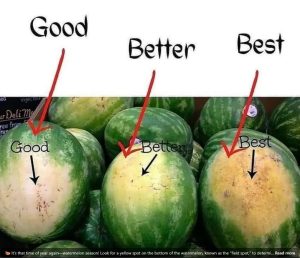
Introduction
Watermelon is the classic summer fruit—refreshing, juicy, and naturally sweet. But selecting the perfect melon at the store or market can sometimes feel tricky. Even though many watermelons look similar on the outside, a few simple tips can help you choose a ripe, flavorful one every time. This guide will take you through the key signs—like shape, color, sound, and weight—so you can confidently bring home the best watermelon for your next picnic, BBQ, or snack.
What to Look For When Choosing a Watermelon
1. Pick a Uniform Shape
Look for a watermelon that’s symmetrical—whether round or oval. Odd bumps, dents, or flat areas may mean uneven growth and inconsistent ripeness. Avoid fruits with bruises or soft spots on the rind, as these can indicate damage or overripeness.
2. Examine the Skin Color
A ripe watermelon usually has a deep green rind with a dull, matte finish—not shiny. If you see white streaks or pale areas, the melon is likely underripe. The richer and more uniform the green, the better.
3. Spot the Field Mark
Check for the creamy yellow patch where the watermelon rested on the ground while growing. A bright yellow or creamy spot means the melon ripened fully on the vine. A pale or white spot usually signals it was picked too soon and won’t be as sweet.
4. Tap and Listen
Gently tap the watermelon with your fingers. A ripe melon produces a hollow, deep sound that shows it’s juicy and full of water. A dull or flat noise may mean the fruit is underripe or overripe.
5. Feel the Weight
Lift several watermelons of the same size and choose the heaviest. Heavier melons contain more water, which usually means juicier, fresher fruit.
6. Know the Variety
Some types—like seedless or mini watermelons—tend to be naturally sweeter. If you know your options, pick a sweeter variety, but remember, ripeness is the most important factor.
7. Check the Stem or Tail
If the watermelon has a stem or tail, look at its color. A dry, brown tail means it was harvested at peak ripeness. A green tail suggests it might have been picked too early.
